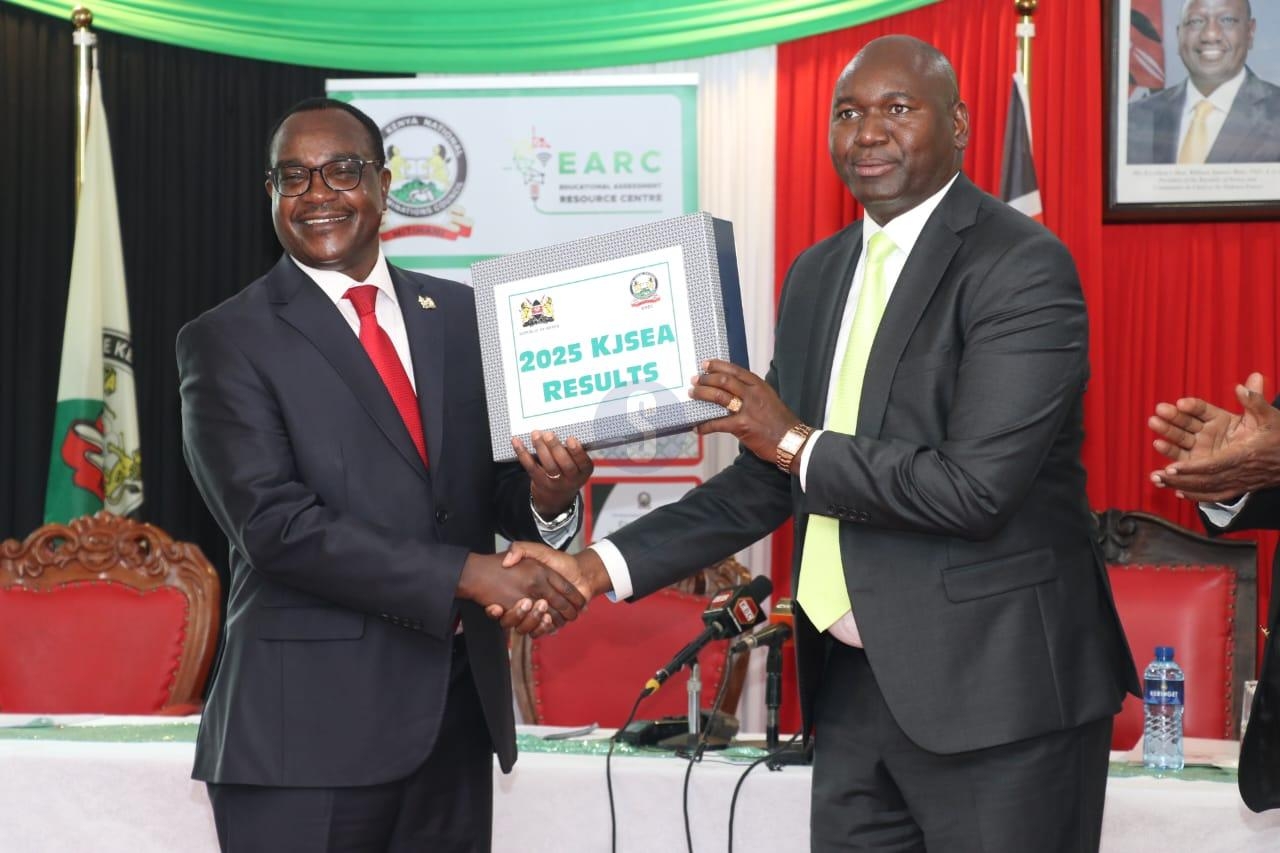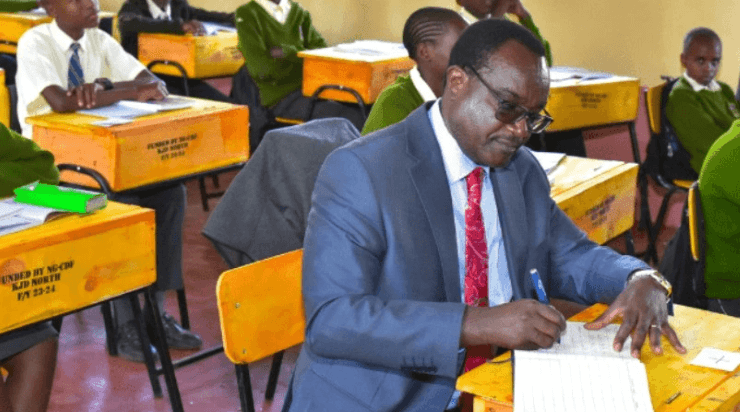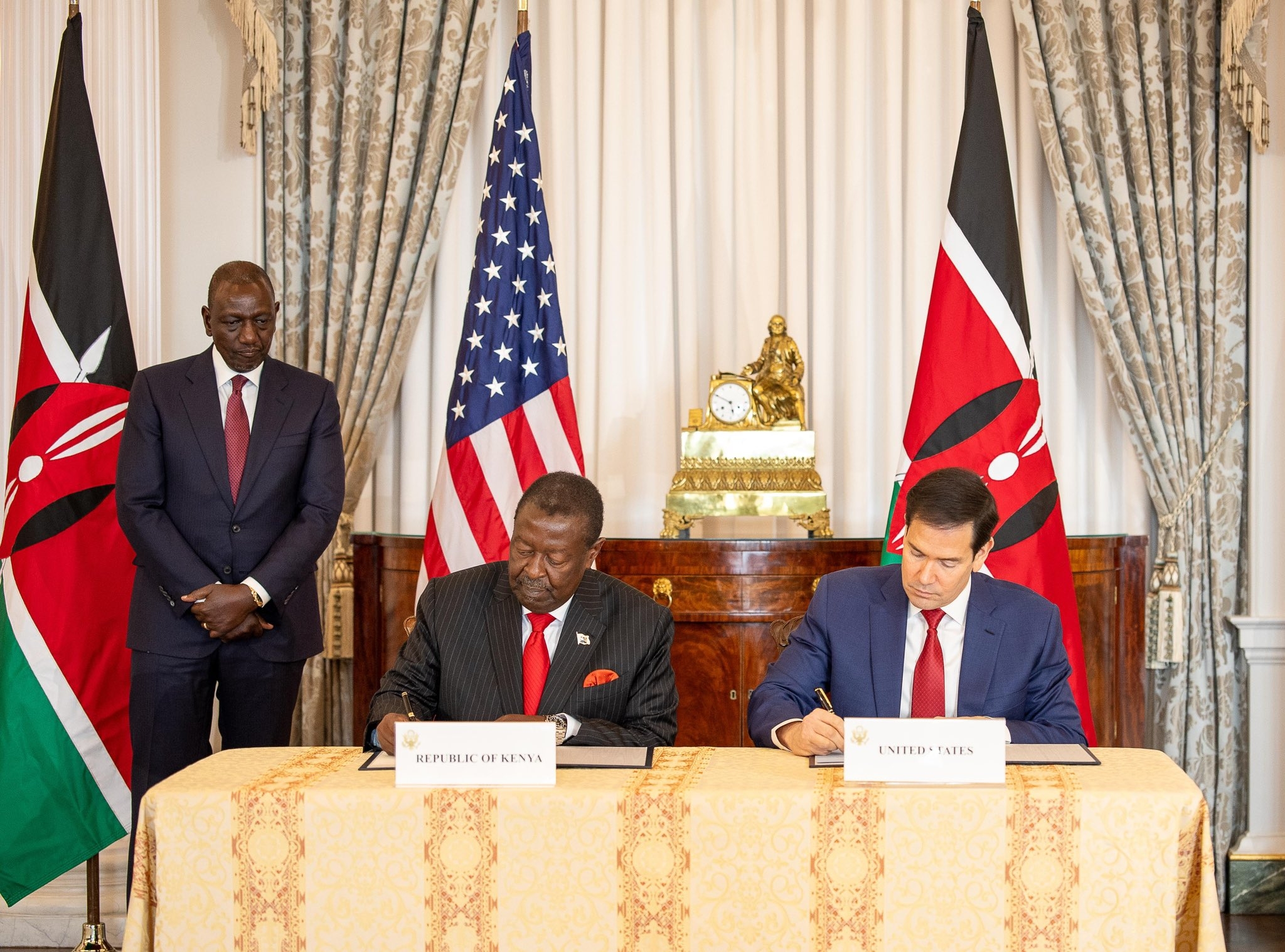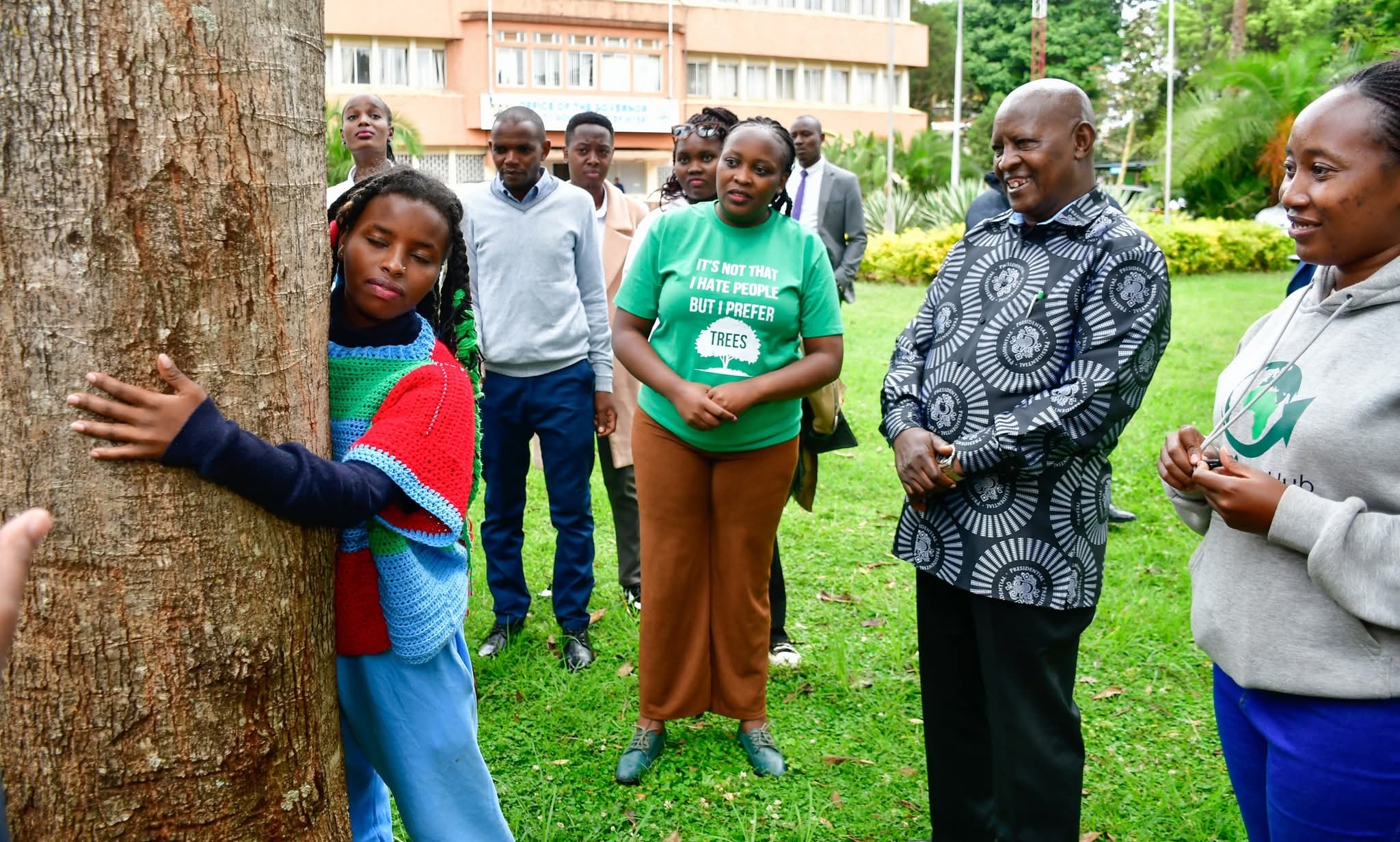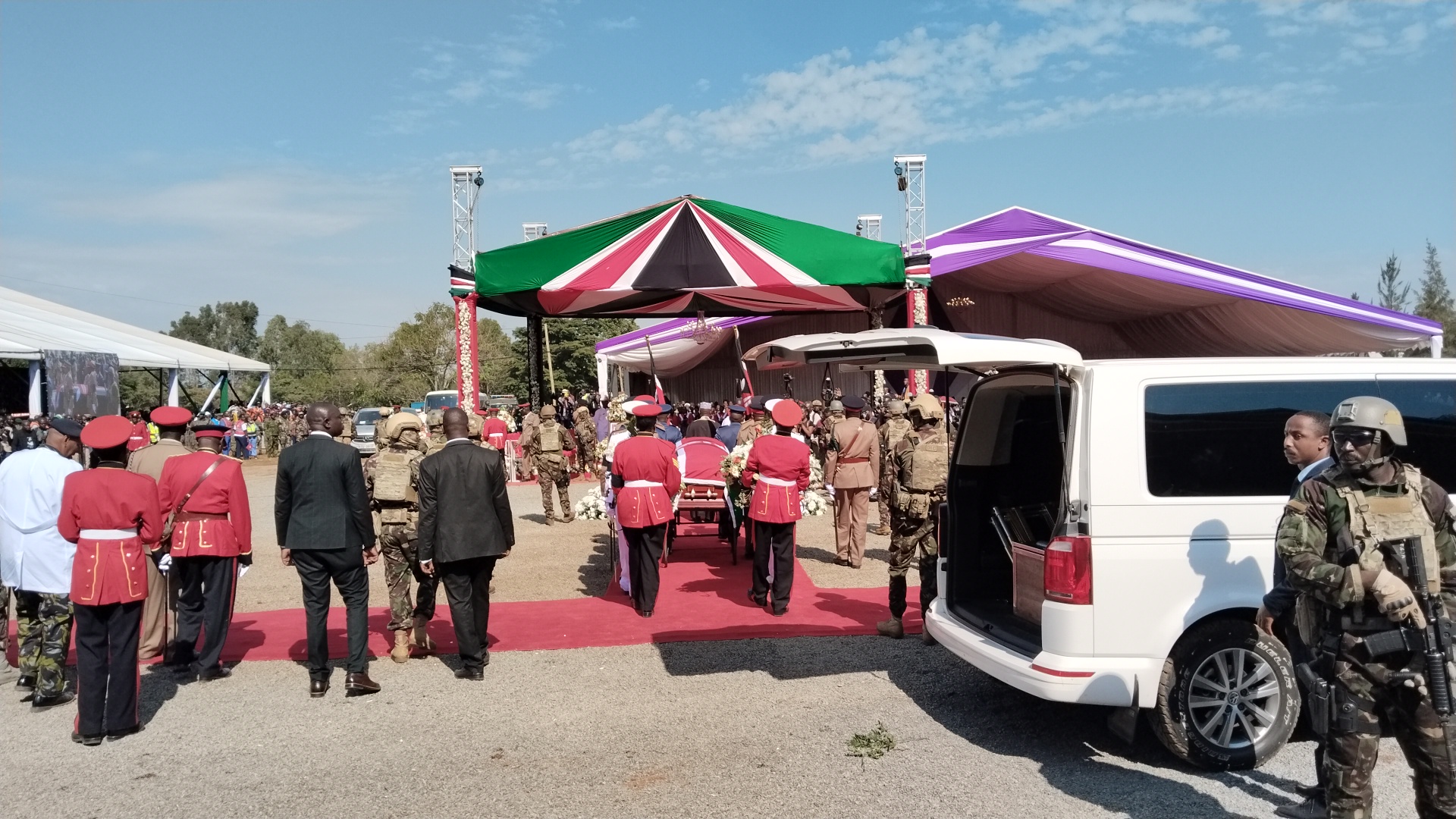
From the break of dawn, the air around Jaramogi Oginga Odinga University of Science and Technology in Bondo was thick with emotion, song and colour.
Thousands of mourners, young and old, streamed into the venue to bid farewell to Kenya’s longest-serving opposition leader, Raila Odinga.
Women in bright lesos emblazoned with Raila’s image sang different tunes of music that once echoed through Kenya’s streets during his political rallies.
Men waved miniature Kenyan flags, some hoisted portraits of the man they fondly call Baba, while others danced to the beat of drums that seemed to shake the ground itself. Vuvuzelas blared without pause, rising above the chants of “Baba Baba”.
The expansive university grounds were a sea of humanity. Every tent was filled, forcing many to seek shade under trees or stand shoulder to shoulder in the blazing Siaya sun.
Some had camped in Bondo since Friday night, unwilling to miss the final send-off of a man they called “the People’s President”.
“I came all the way from Kisumu yesterday (Saturday),” said Mama Beatrice Akinyi, 45, tears glistening in her eyes.
She said Raila is not just a leader to them but family.
“We grew up following his courage, his voice for the poor, championing women's rights. And today, I just wanted to say thank you, Baba.”
As the morning stretched into midday, a procession of mourners carrying twigs and flags moved rhythmically to Luo folk songs.
Local church choirs interspersed their hymns with chants of peace and unity, turning the solemn event into a powerful blend of mourning and celebration.
Security officers in full uniform were stationed at every corner, scanning the swelling crowd.
The government had declared the day a national event, befitting Raila’s stature as a statesman who defined Kenya’s political landscape for more than four decades.
A tapestry of humanity stretched from the main dais, with men in suits and women in colourful attires and headscarves following the service keenly.
“We came all the way from Ahero,” said Kevin Otieno, 29, who stood with his friends, their shirts emblazoned with Raila’s portrait.
“We didn’t want to just watch this on TV. Baba gave us hope as young people that we could dream of a better Kenya. We are here to walk with him on his last journey.”
Dison Anyonje from Kakamega said he could not miss this for anything.
“We will not see Raila again and I wanted to spend his last day with him,” he said, adding that though the crowd was too much, he managed to follow everything through the screens.
HISTORIC FAREWELL
The atmosphere was electric yet heavy with sorrow.
Women ululated between sobs, while men clapped rhythmically to the beats of traditional drums.
A group of young men and women, Gor Mahia fans from both Kisumu and Nairobi, danced in a circle, waving reeds and singing songs of praises for Raila.
The university’s open field transformed into a living portrait of Kenya’s unity in grief.
“This is history,” said Mzee George Oloo, 72, from Siaya.
“We buried Jaramogi here. Today, we returned to lay his son beside him. Generations will remember the Odingas for their courage and love for Kenya.”
The crowd often erupted into applause when Raila’s name was mentioned by speakers on the podium.
Chants of “Baba! Baba!” rolled like thunder, uniting people from all walks of life: farmers, teachers, boda boda riders, students and traders. Each carried their own story of how Raila’s life had touched theirs.
Security remained tight throughout the event.
Police formed barricades to manage the swelling crowds as helicopters occasionally circled overhead.
Inside the main compound, paramedics stood ready as some mourners fainted from the heat and emotion.
Yet through it all, discipline reigned, a reflection of the deep respect many held for the man they were sending off.
Vendors selling bottled water, snacks and Raila-themed memorabilia lined the roads leading to the university.
Flags, wristbands and T-shirts with the words “Baba Forever” disappeared quickly from the stalls.
“I have never seen such a crowd in my life,” said Mercy Atieno, a trader from Bondo who set up a stall near the main gate.
“People came from as far as Nairobi and Mombasa. Even if they didn’t have a seat, they just wanted to be here to feel close to him one last time.”
As the sun began to dip, casting a golden hue over Bondo, songs of hope replaced the earlier wails.
Mourners clasped hands, some weeping silently, others smiling through tears.
For a man who had dedicated his life to the fight for democracy, justice and equality, the send-off was nothing short of monumental, a celebration of resilience, courage and faith in the dream of a better Kenya.
“We have lost a pillar, a voice that never wavered,” whispered 80-year-old Mama Phoebe Adhiambo, who sat quietly under a tree, adding that Baba lives ON in every Kenyan who still believes in freedom.
Raila Odinga’s farewell was not just a burial, it was a national symphony of gratitude, grief and unyielding love for a man whose name will forever be etched into Kenya’s history.


